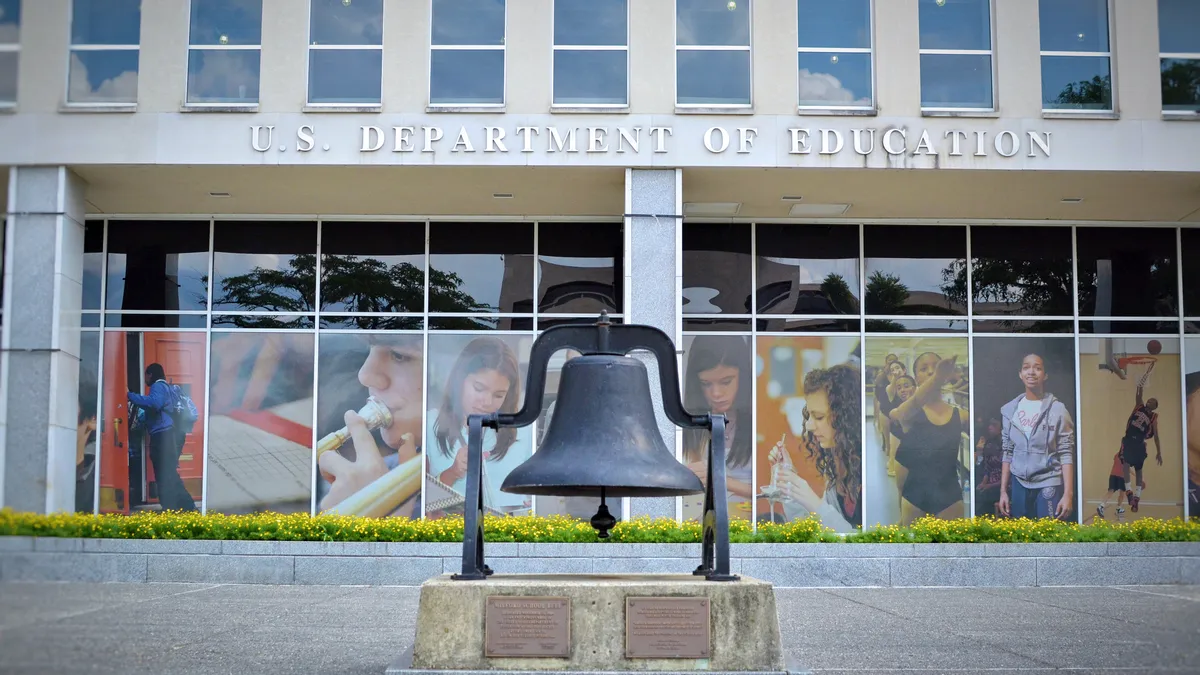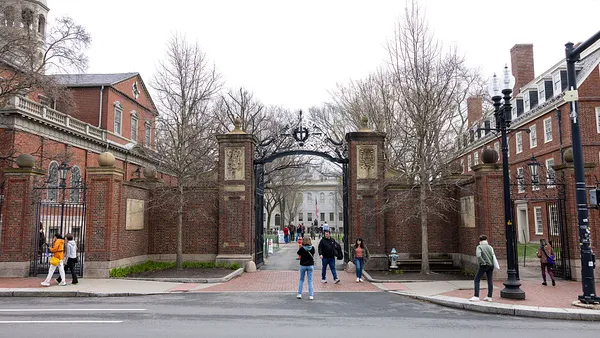Dive Brief:
- The U.S. Department of Education has handed down its final borrower defense rules, which raise the bar for borrowers seeking relief but walk back elements of the agency's original proposal that critics saw as extreme.
- Announced Friday, the rules did not include a controversial proposal that borrowers must default in order to apply for relief. However, they shorten the time period for students to file a complaint and lift a ban on colleges' use of mandatory arbitration, among other changes.
- The rules also require borrowers to prove they couldn't find employment as a result of misrepresentation by their colleges — a move critics say could lead to fewer borrowers filing for forgiveness.
Dive Insight:
"The things they walked back were the things they proposed as huge outliers that were inconsistent with current practice and inconsistent with how people see these policies," said Clare McCann, deputy director for federal higher education policy at New America, in an interview with Education Dive.
The new rules will replace student loan borrower protections the Obama administration finalized in 2016 following the closure of several for-profit colleges due to a regulatory crackdown on the sector. The fallout has left tens of thousands of students with debt and no degree or one that has little value in the market.
For-profit colleges have welcomed the changes, having opposed the 2016 rules that they said disproportionately targeted them.
"We are very supportive of this administration's rewrite of the borrower defense regulations," Michael Dakduk, executive vice president and director of government relations at Career Education Colleges and Universities (CECU), a trade group for for-profit colleges, told Education Dive in an interview. "We think it's fair for all parties involved — that's the students, the institutions and the taxpayers."
CECU also called for the Ed Department to remove the default requirement in its comments on the proposed rules. Dakduk said allowing borrowers to apply for a closed-school discharge if their schools closed up to 180 days after they withdrew, rather than 120 under the 2016 rules, is a positive, along with what he said is a general focus on prioritizing completion. "It's not just about the discharge of loans," he said.
However, critics are concerned the rules limit borrowers' ability to benefit from the regulations.
Among other changes, the new rules set a three-year limit from when a borrower graduated or left school on filing defense to repayment claims; the 2016 rules allow up to six years for breach of contract or misrepresentation. They also require each claim to be reviewed individually, eliminating the group discharge process. And they require students to go to greater lengths to show they were financially harmed by misrepresentation from their colleges.
"Already, you are curtailing the number of students who will seek relief and then have a viable chance of receiving relief," said Ashley Harrington, senior policy counsel at the Center for Responsible Lending (CRL). That is directly tied to what a department will be able to recover from a school, she added, "and that means there's going to be a lot of schools that get off the hook."
McCann added that the higher bar could allow the department to "arbitrarily reject applications."
The Ed Department's estimates suggest that less debt will be collected under the new rules.
For instance, just under 5% of eligible loan debt at for-profit colleges is likely to be relieved under the new rules in 2020, compared to nearly 55% under the 2016 rules. The share for private colleges drops from around 42% to 3% that year. The department expects to recover about 16% of the canceled debt from for-profit colleges under the new rules in 2020, down from 29% under the 2016 rules.
"We believe this final rule corrects the wrongs of the 2016 rule through common sense and carefully crafted reforms that hold colleges and universities accountable and treat students and taxpayers fairly," Education Secretary Betsy DeVos said in a statement, noting that the department expects the rules to save taxpayers $11.1 billion from 2020 to 2029.
The new rule gives the department and colleges a third standard on borrower defense, McCann said, which could add administrative complexity. A court has ordered the department to implement the 2016 version of the rules after it stalled them while developing its own. The new rules would apply to loans made on or after July 2020. But the administrative backlog is extensive, with more than 180,000 claims awaiting review as of late June, The Washington Post reported.
"We are diligently working to see if there is a different methodology we could employ so we can resolve those claims," Ed Department Principal Deputy Under Secretary Diane Auer Jones told journalists in a call Friday to discuss the new rules, according to The New York Times.















